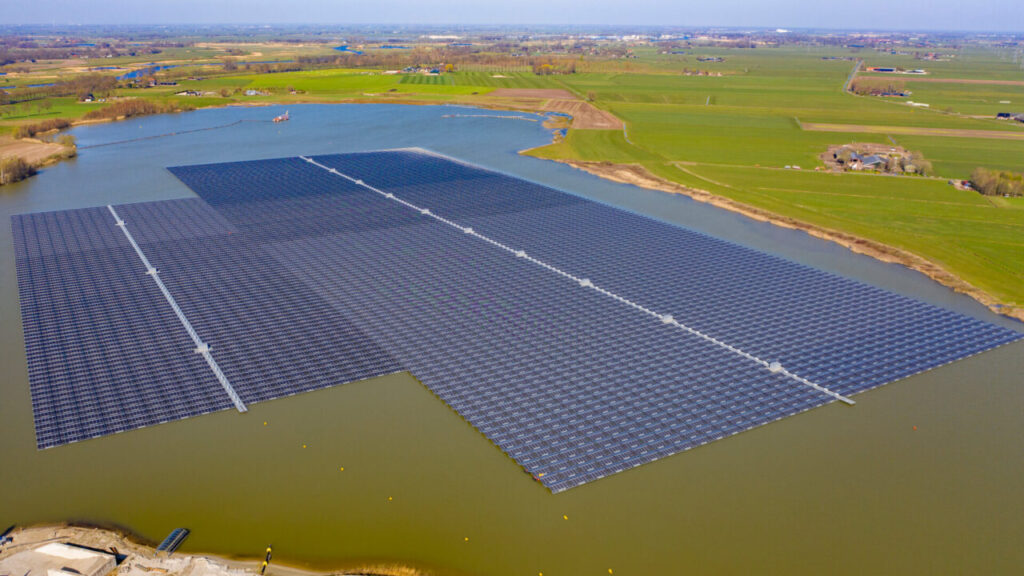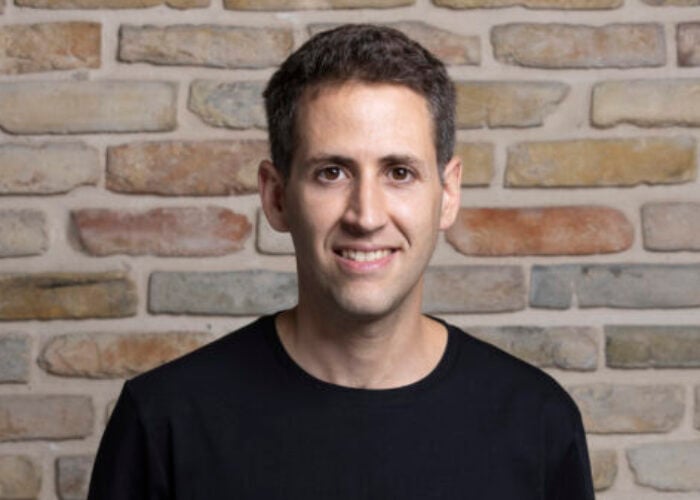
The carbon footprint produced by production and operation of floating PV systems in Europe could be around seven times lower than ground-mounted solar systems, making floating PV a “valuable complement” to utility-scale solar deployments.
These are the conclusions presented in a report published by Dutch research organisation TNO, in collaboration with the International Energy Agency (IEA) and its Photovoltaic Power Systems Programme (PVPS).
Try Premium for just $1
- Full premium access for the first month at only $1
- Converts to an annual rate after 30 days unless cancelled
- Cancel anytime during the trial period
Premium Benefits
- Expert industry analysis and interviews
- Digital access to PV Tech Power journal
- Exclusive event discounts
Or get the full Premium subscription right away
Or continue reading this article for free
‘Carbon Footprint Analysis of Floating PV systems’, published this week, compares the power output and operation of two floating PV projects on inland water bodies in Germany and the Netherlands, which have been in operation since 2021, to the characteristics of two theoretical solar plants in Cologne, modelled with yield prediction tool BIGEYE.
The floating plants differ in that the project in Germany has floaters made predominantly from high-density polyethylene (HDPE), while the project in the Netherlands has floaters comprising a combination of steel and HDPE. The two theoretical ground-mounted projects differ in their orientation, with one facing east-west and the other facing south and considered to have “optimum orientation and tilt”.
The systems had a relatively narrow range of carbon footprint by project capacity; the two ground-mounted systems were considered to be the same, and so were modelled with the same capacity. These projects had carbon footprint of 1,100kgCO2eq/kWp, compared to 1,280kgCO2eq/kWp for the HDPE floating project in Germany, and 1,300kgCO2eq/kWp for the compound floating project in the Netherlands.
The graph above demonstrates the carbon footprint by electricity output of each of these systems, where the variance in tilt angle and orientation among the ground-mounted projects impacted both electricity output the overall carbon footprint of the system.
The report notes that this means that the carbon footprint of the floating systems is about 15% higher than that of the ground-mounted system with the east-west orientation, and around 25% higher than that of the optimum ground-mounted project.
While this demonstrates a higher theoretical carbon footprint for the floating projects, the report notes that, compared to actual solar projects currently in operation in Western Europe, the floating projects’ performance is actually very strong. In Germany and the Netherlands, the average carbon footprint by output of the countries’ average energy mix is around 380gCO2eq/kWh, meaning that the floating projects produce around seven times less carbon dioxide per kilowatt-hour of electricity generated.
Shortening lifespans would drive up carbon emissions
The report also notes that shortening the lifespans of such projects can have a profound impact on their relative carbon footprints. A reduction in the lifetime of the systems’ modules from 30 to 20 years can lead to an increase of 31% for the HDPE system and 28% for the compound floating system.
Meanwhile, a reduction of the lifetime of the systems’ support structures leads to an increase in carbon footprint of 19% for the HDPE system and 16% for the compound system. This suggests that shortening module lifespan, rather than the operational lifespan of supporting infrastructure, such as floaters, will have a more profound negative impact on the system’s overall carbon footprint.
This is notable because floating PV projects have been shown to have a slightly higher degradation rate – the rate at which a PV system loses efficiency and produces less power over time – than ground-mounted systems.
A report published in 2021 from the Indian Institute of Technology found that floating systems had a degradation rate of 1.18%, compared to 1.07% for ground-mounted projects, and one way to minimise the extent of this degradation would be to cut the overall lifespan of the projects. However, this must be done with care so as not to maximise carbon emissions in the short term.
“Therefore, it is recommended to closely monitor the degradation rate of the PV modules, as well as the performance and reliability of the overall system and the need for maintenance,” wrote the report’s authors. The report can be accessed here.
Floating solar design has seen some notable advances recently, with Spanish tracker manufacturer Soltec unveiling a new floating tracker design earlier this year. The news follows the passage of new regulation on floating PV by the Spanish government, raising hopes for greater deployment of floating PV in the country.






